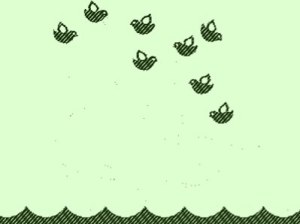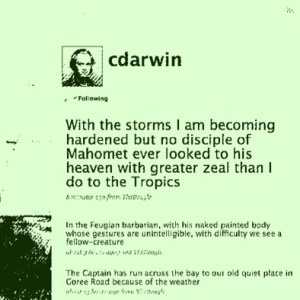
adapted from animation on the BBC bite-size website
Tomorrow is the day of the interview (aspiring science AST) and today I’ve spent… well… mostly laid up in bed with a neck so sore I can’t really face the front at the moment. Hopefully hot baths, deep heat and piles of painkillers will do the job for me.
I’ve been getting fairly wound up about it (and have been taking it out on poor Simone I’m sure) it’s the whole unknown that’s bugging me. I like to know as much as I can going in, so the guidance of Difference Between Mixtures and Compounds is such a little amount of information my brains been going off on mad tangents. Are they at the start of a unit? The end? Is it revision? What do they already know? Ah me! Attempts to find out have failed, and the last interview was postponed because of the #uksnow so I guess it was time to shut up anc crack on with it!
Things I already know. It’s a mixed ability Yr 8 group. I was told in an email that I’d be teaching Yr 8, and I know from the school website that they’re mixed ability in years 7-8. I know I have to differentiate up and down regardless. I know that I’m teaching the Difference Between Mixtures and Compounds. Chemistry – yums. I know the behavioural policy of the school thanks to the website. I know sort of what they follow at KS3. I’m getting myself proper prepared. I’ve even bugged the twitterverse (thanks go out to @_MisterG for the advice)
So, I’ve been reading the national strategy for KS3/4. I teach post 16 at the moment, so it’s been a year and a half since the PGCE and any KS3 teaching at all. I think I can bring in some scientific thinking (describe how the use of a particular mocel or analogy supports an explanation) then year 8 3.2 Chemical Reactions
– recognise that materials can be made up of one or more kinds of particles
– describe the type and arrangement of atoms in elements, compounds and mixtures
– describe and develop a particle model…. compounds and mixtures (elements)
So planning the lesson. I think I’m going to go with this as a general lesson on the difference between mixtures and compounds:
Lesson Title: The difference between mixtures and compounds

Settler Activity:
On the board a question is posted with a large image. Starter activity is designed to transition students from where they’ve been before the lesson into the lesson itself. Is supposed to set the ideas for the lesson starting, to begin thinking about the subject at hand. I’ve got one about explosive metals, poisonous green gas and a portion of chips. This may change (feedback really very welcome). This usually is only a five minute thing while students get into lesson and get themselves ready, there is potential to expand on the settler and turn it into a starter if the students are enthusiastic enough for it.
Task during settler: ask students to write their names on sticky labels with a drawing of themselves that tells me something about them and stick it to their blazers(!). This is to help me get to know the class as quickly as possible.

Starter Activity:
Students are popped randomly (if they don’t have assigned groups already) into groups of about four and given magnets, sealed containers of iron filings, sulphur and a mix of iron filings and sulphur. They have five minutes to make as many observations about the three sets of materials as possible. Summary of information added by a student to bubbl.us (if I have internet access – if not I’ll make a little mind map for it).
Demo of making Iron Sulphide. Compare changes in physical appearance and properties. Add to bubbl.us
What do you think the learning objective for this lesson is? Write up student derived learning objective.
What do you think the particles of these materials look like? volunteers to draw on the board – may require reminders from year seven work.

Main:
Part one: Element, Mixture or Compound?
In their groups students are given a small selection of materials and have to decide which one is a mixture, which is a compound and which is an element. Must be able to qualify this.
Part two: model and presentation
Students will be given a card cut out of a test tube, and an envelope with cut out ‘particles’ inside. They have to choose one of the containers of material they have been given to classify and represent the particle layout in a test tube (relating particle theory of matter to model for mixtures and compounds) write on the top what it is and whether it’s an element, mixture of compound. Show students a model (maybe iron, sulphur and iron sulphide) Students present ideas to each other in small group presentations
Part three: Definitions (v. short) In pairs define mixture. Now in groups of four can you improve on this definition, as a whole class can we improve on this definition? Repeat for compound

Plenary:
1. Analogy wall (Group)
Over the course of the plenary the groups are given post-it notes and asked to come up with analogies for mixtures and compounds. For example – the ingredients for cake in a bowl is a mixture, but when it is baked the cake is like a compound… students to feel free to come and add analogies to the board throughout plenary. If time allows questions can be asked about analogies (eg. in this analogy what does X represent? Which bit is the compound?)
2. Making notes (Individual)
Under the two headings Mixtures and Compounds students are to write the key points of the lesson in their book. Can add diagrams if they so wish to. Should leave a good space between headings. After 5/10 minutes students offer key points and they are summarised on the board. Students given time to amend their own notes to add anything they might have missed.

Extension:
Mixtures of compounds
Jelly in water
Not questions or tasks but problems that are set around the room to ponder and maybe offer ideas on! More something to think about than anything.
Differentiation:
I’m not yet sure what to do for this, whether or not to make up some reminder cards for people who are struggling with concepts and maybe some definitions cards too. Hmm….

Notes:
Music in lessons – I like it! And think I’m going to use it in this lesson too. Background music sets a noise level, if I can’t hear it the students are being too loud. I never expect silence in a classroom (it’s creepy), I ask for quiet while I’m talking but that’s about it. Plus, when you want their attention, hit the mute button and watch the heads pop up wondering where the music went. I have some rules though, I don’t play classical. Students don’t love it (I also don’t love it) I won’t play music with lyrics (I have made exceptions to this on the odd occasion but as a rule of thumb..) I find some nice cheery non offensive electronica like Four Tet does the job quite well. Funky enough to be uplifting without sending them nuts. Dirty Three Ocean Songs is a mellower alternative.
there’s quite a lot there, but that’s OK, it’s better to have too much and selectively crop than to have too little and desperately fill I reckon.
So there, that’s what I think I’m going to do. I’m going to tie up the loose ends, try to get some sleep and hope that my neck pain eases. I’m not going to worry about it anymore. It’s out of my hands anyway!




